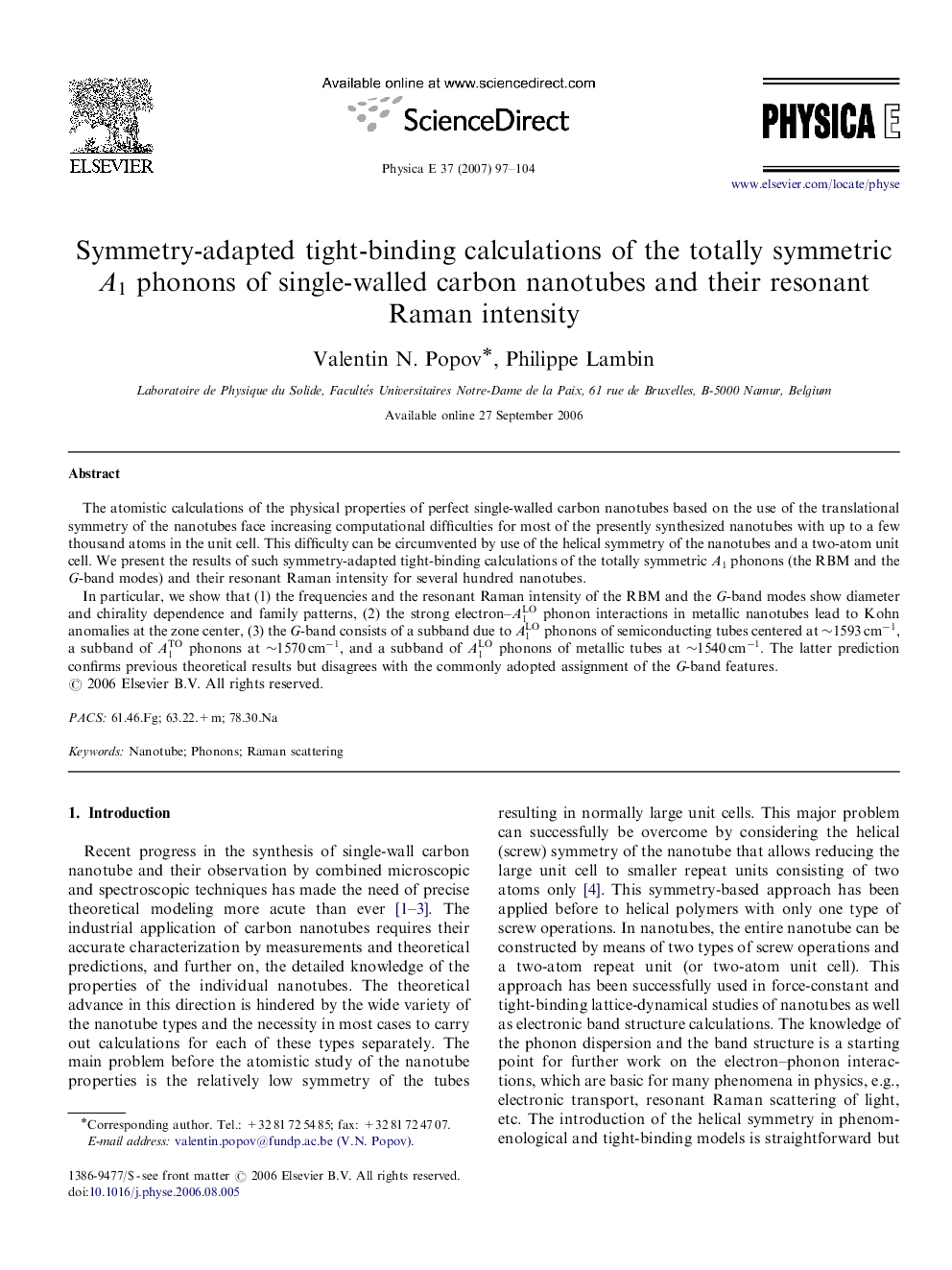| Article ID | Journal | Published Year | Pages | File Type |
|---|---|---|---|---|
| 1547203 | Physica E: Low-dimensional Systems and Nanostructures | 2007 | 8 Pages |
The atomistic calculations of the physical properties of perfect single-walled carbon nanotubes based on the use of the translational symmetry of the nanotubes face increasing computational difficulties for most of the presently synthesized nanotubes with up to a few thousand atoms in the unit cell. This difficulty can be circumvented by use of the helical symmetry of the nanotubes and a two-atom unit cell. We present the results of such symmetry-adapted tight-binding calculations of the totally symmetric A1 phonons (the RBM and the G-band modes) and their resonant Raman intensity for several hundred nanotubes.In particular, we show that (1) the frequencies and the resonant Raman intensity of the RBM and the G -band modes show diameter and chirality dependence and family patterns, (2) the strong electron–A1LO phonon interactions in metallic nanotubes lead to Kohn anomalies at the zone center, (3) the G -band consists of a subband due to A1LO phonons of semiconducting tubes centered at ∼1593 cm−1, a subband of A1TO phonons at ∼1570 cm−1, and a subband of A1LO phonons of metallic tubes at ∼1540 cm−1. The latter prediction confirms previous theoretical results but disagrees with the commonly adopted assignment of the G-band features.
